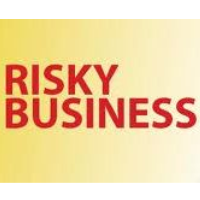California State Auditor Says Education Is at “High Risk”

Three months after California State Auditor Elaine Howle warned the Legislature (pdf) about seven “high-risk” issues the state and select agencies were facing, she added an eighth—Education.
The often-understated Howle, in a report (pdf) released last week, said that despite spending $42 billion of the state’s $88 billion budget on education in fiscal year 2011-12, the “investment has not produced the desired outcomes.” As Howle explains later, those desired outcomes include quality education at decent prices for the people who want it and deserve it.
Education joins a heavyweight list of horribles that includes: deteriorating infrastructure, escalating state employee pensions and health care, shaky emergency preparedness, inadequate workforce planning, an uncertain supply of electricity and suspect oversight of the state’s information technology.
In K-12 schools, the auditor’s concerns are two-fold. Howle thinks the state’s new funding approach, which relies on “significant and sustained growth in the state’s revenues,” isn’t realistic and will end up shortchanging local school districts. The historic shift simplified more than 100 categories of state funding to a handful, giving local districts more say in what they spend money on. It also means that they will get to make the hard decisions about which programs to fund—using an untested system with unstable and possibly diminished revenues.
And Howle thinks switching to new Common Core standards, which will change the way teachers teach, will be wildly expensive and chaotic. The $1.25 billion state subsidy to all the districts to offset transition costs won’t be enough, she said, and noted the Los Angeles Unified School District’s (LAUSD) decision to buy iPads for students and staff at a cost of $1 billion.
Howle couldn’t help commenting on the elephant in the room. The state is feuding with the federal government over its transition to Common Core and could lose $3.5 billion education funds in 2012-13 unless the dispute is quickly settled.
All of this is transpiring against a backdrop of mediocrity, at best. The state spends less money per K–12 student than comparable states. It also has a higher high school dropout rate and lower graduation rate than the national median, according to the auditor.
It doesn’t get any better at the collegiate level. Howle notes rising tuition at the University of California (UC) and California State University (CSU) systems, and larger class sizes, fee hikes, shrinking enrollment and fewer class offerings at community colleges. UC and CSU are still embarked on an interminable search for a stable funding source.
The state has made a “noticeable departure” from previous years in the 2013-14 budget for UC and CSU. The budget ties modest funding increases to tuition freezes, higher and accelerated graduation rates and more transfers from community colleges. Howle is skeptical. Although the university systems have pledged to freeze tuition for two years, “both UC and CSU are uncertain as to whether they can keep tuition at current levels in subsequent years,” she wrote.
Howle also pointed out that the state’s General Fund contribution has fluctuated dramatically over the years, forcing the schools to compensate by raising tuition.
–Ken Broder
To Learn More:
California Education at "High Risk," Auditor Says (by Elizabeth Warmerdam, Courthouse News Service)
New High Risk Issue: Providing a High Quality and Affordable Public Education Presents Significant Challenges (California State Auditor) (pdf)
- Top Stories
- Controversies
- Where is the Money Going?
- California and the Nation
- Appointments and Resignations
- Unusual News
- Latest News
- California Forbids U.S. Immigration Agents from Pretending to be Police
- California Lawmakers Urged to Strip “Self-Dealing” Tax Board of Its Duties
- Big Oil’s Grip on California
- Santa Cruz Police See Homeland Security Betrayal in Use of Gang Roundup as Cover for Immigration Raid
- Oil Companies Face Deadline to Stop Polluting California Groundwater





